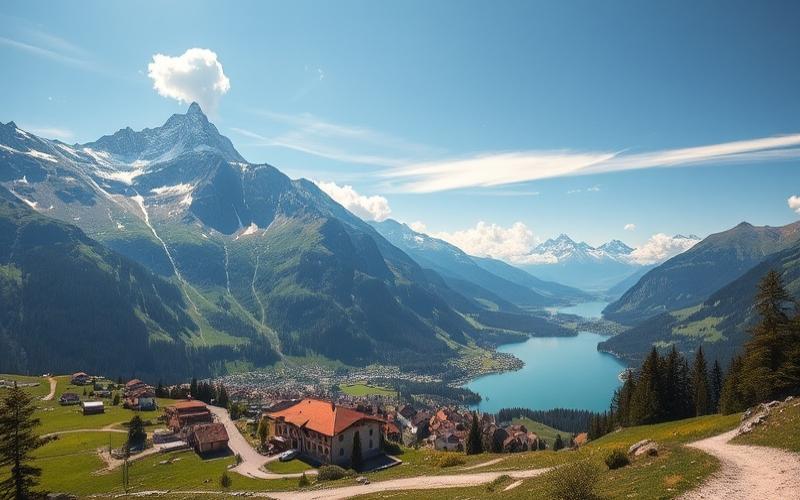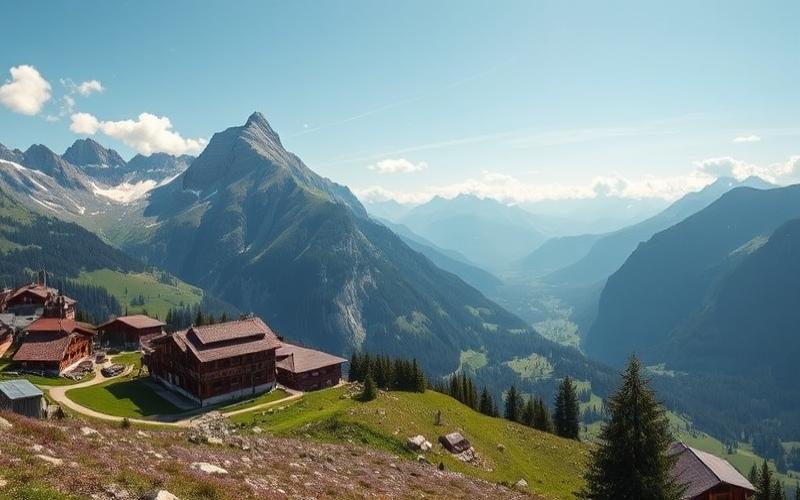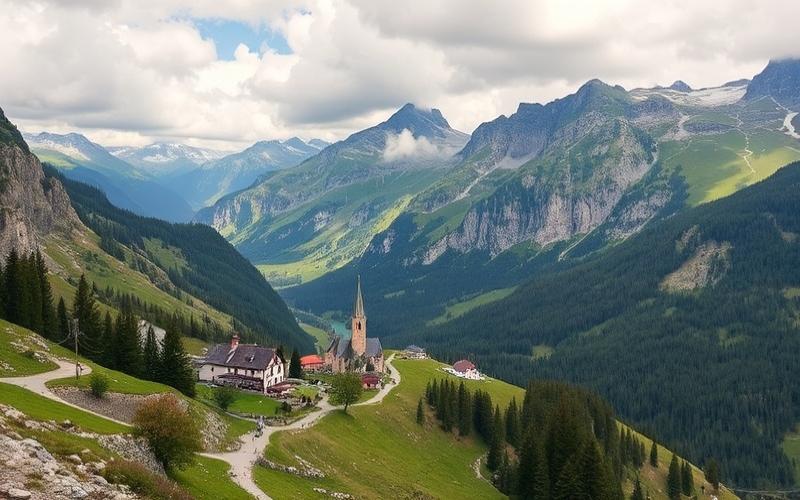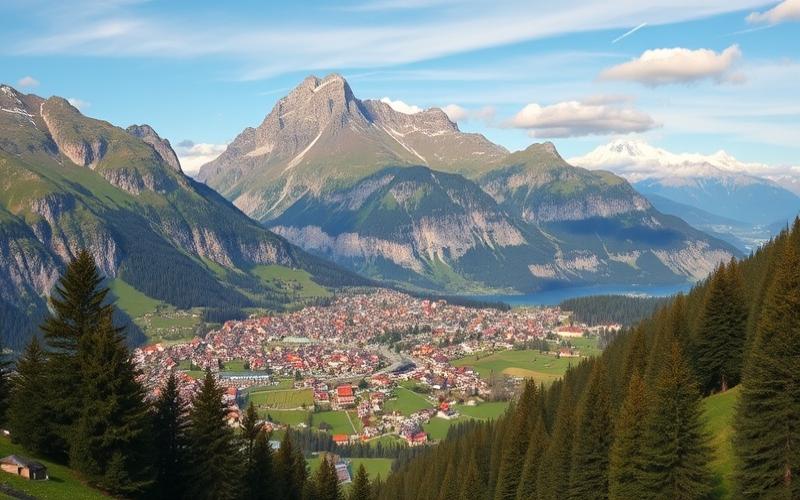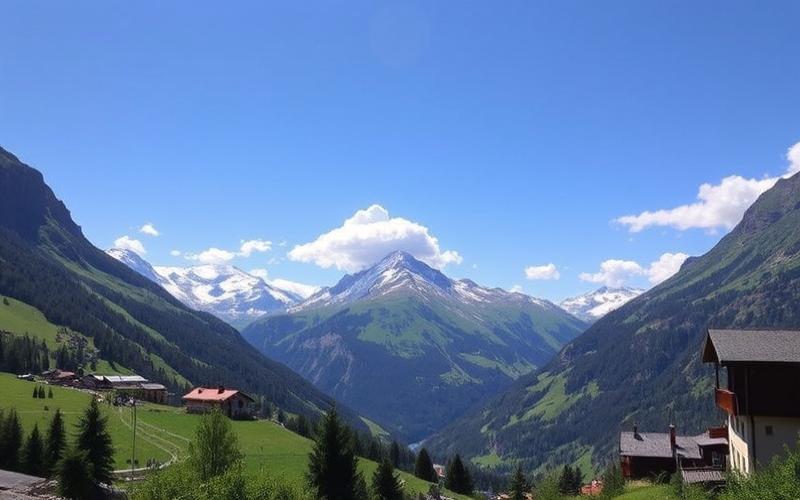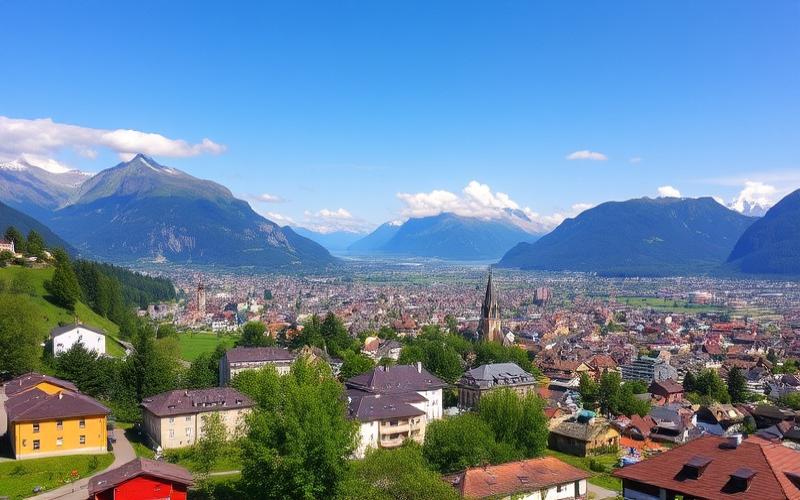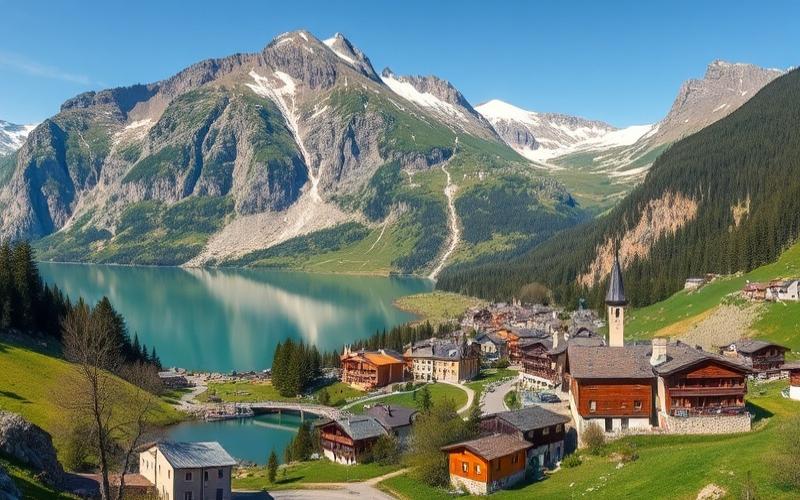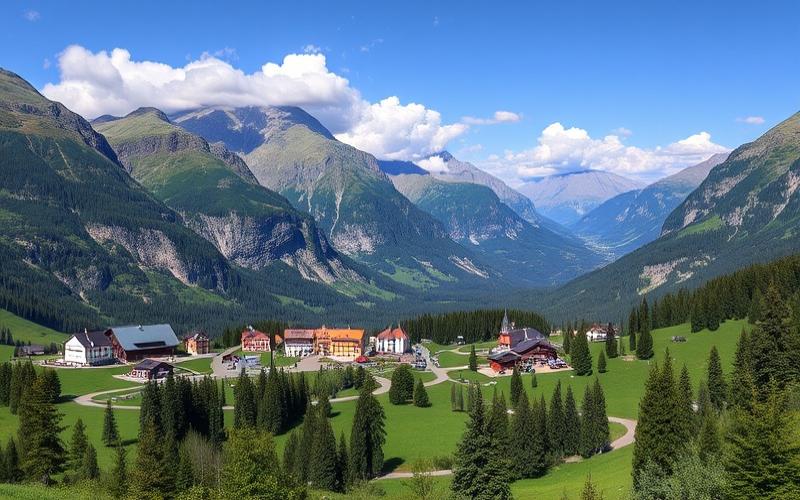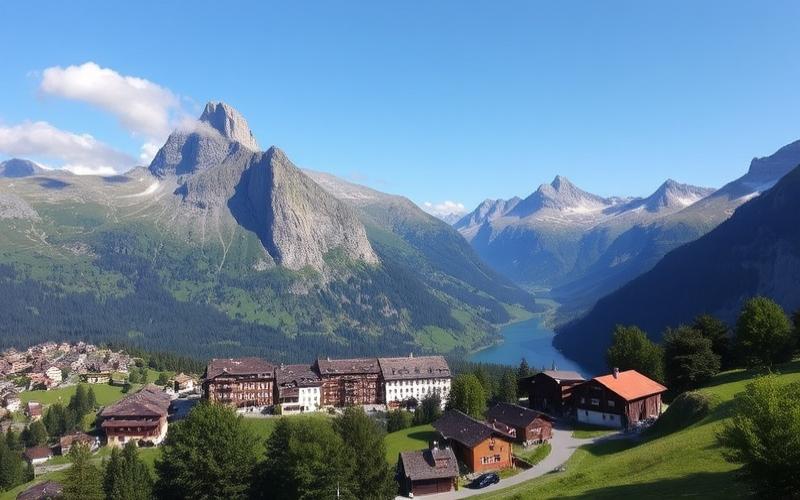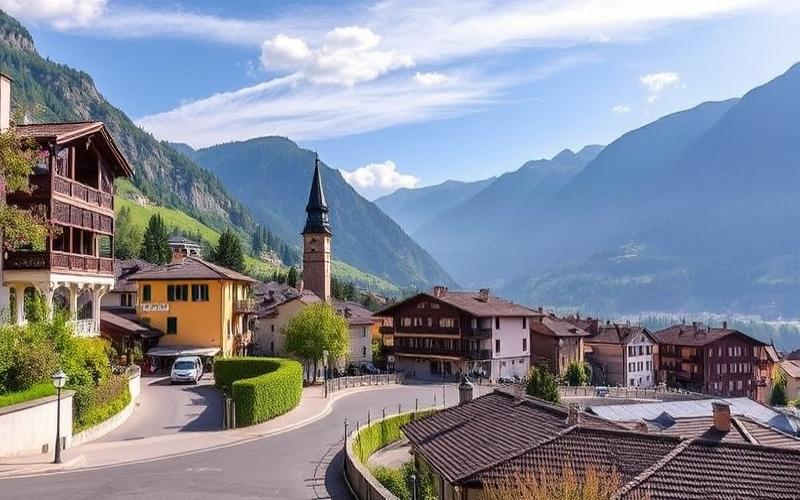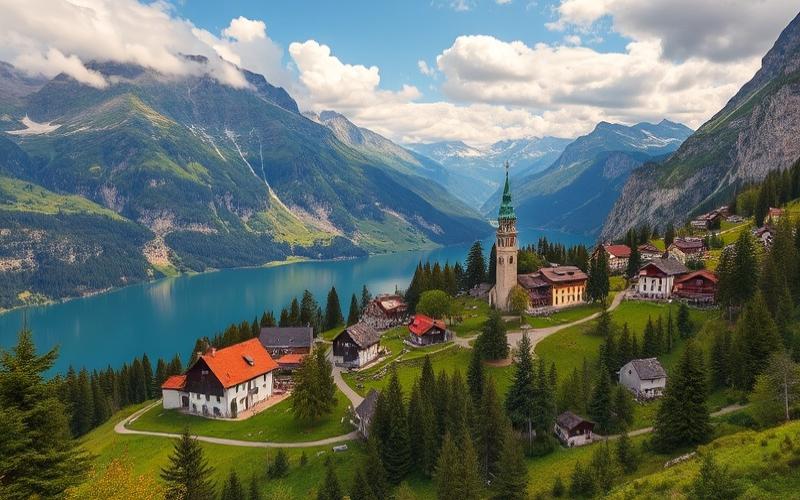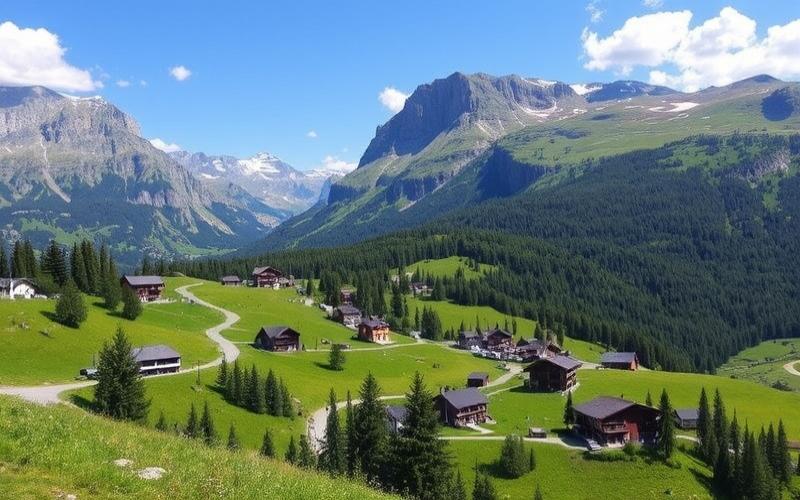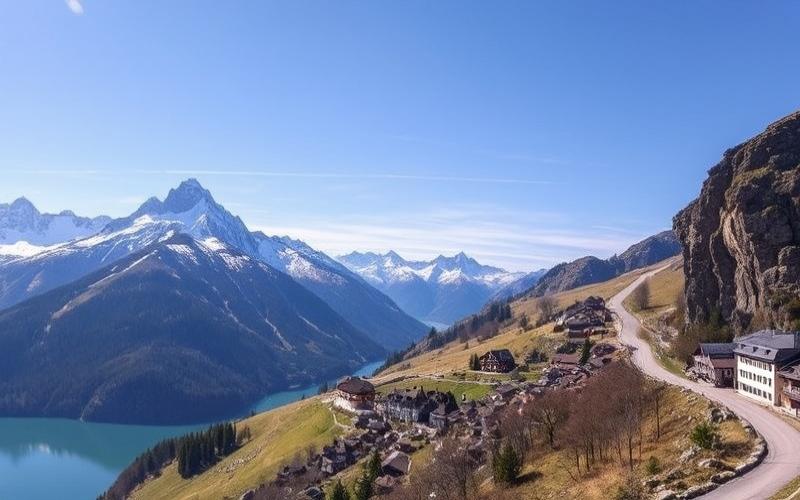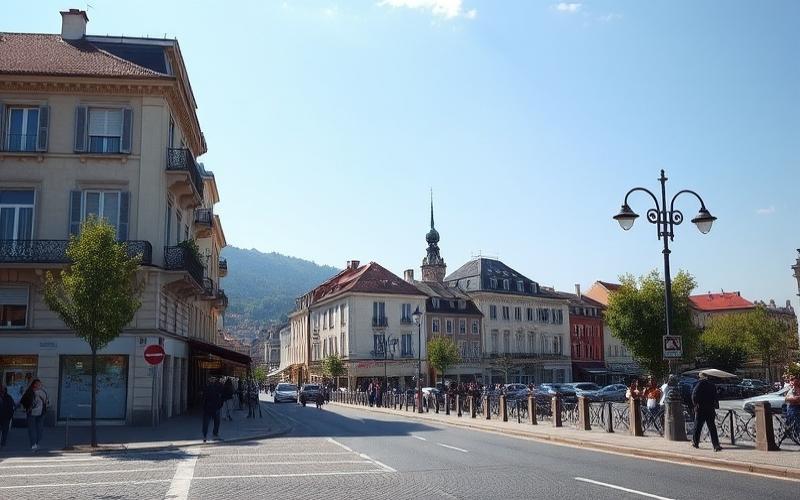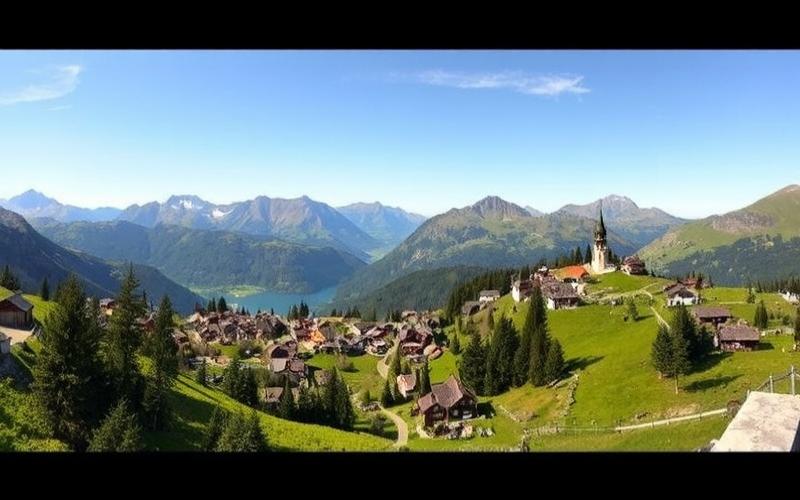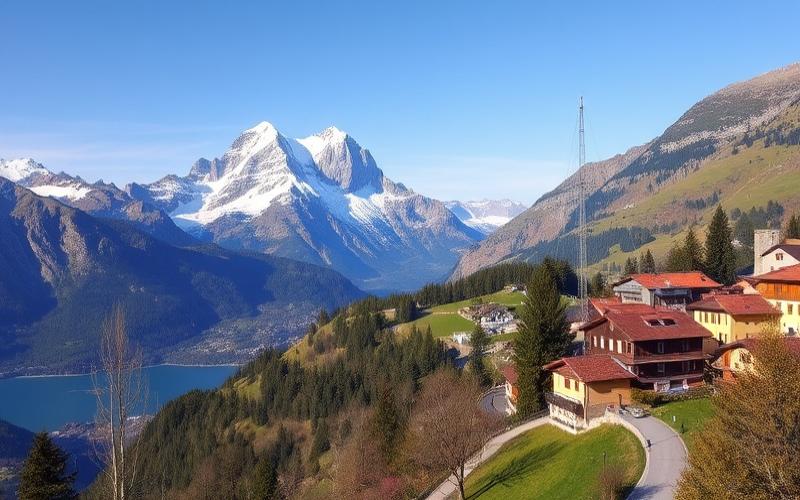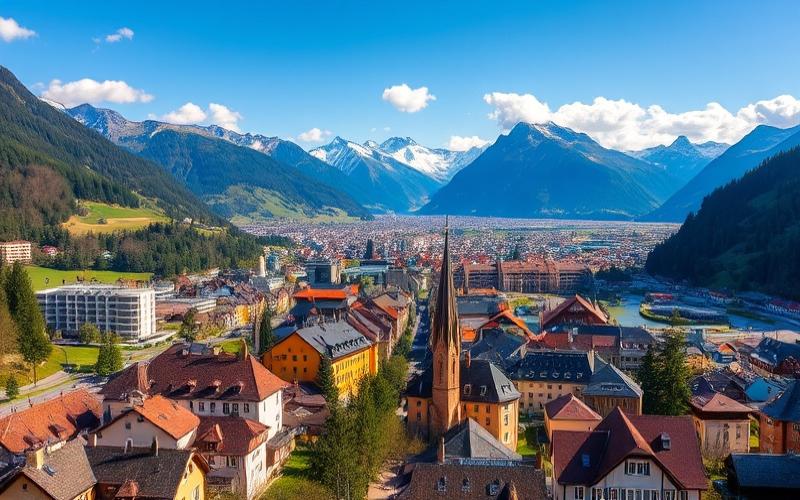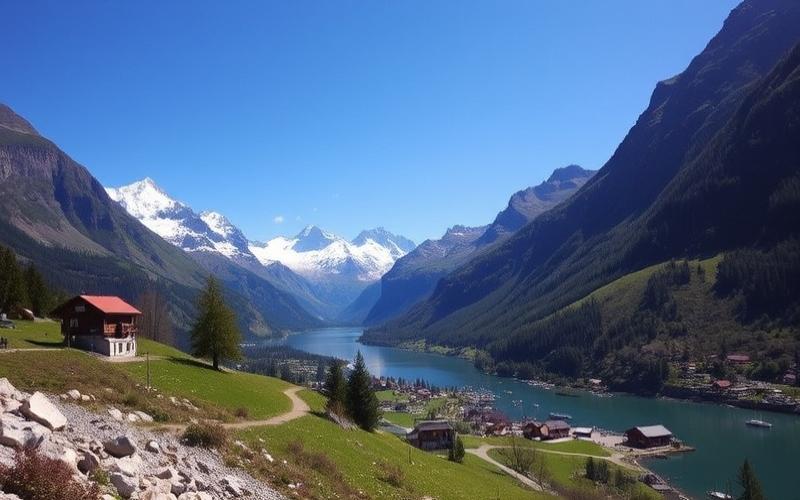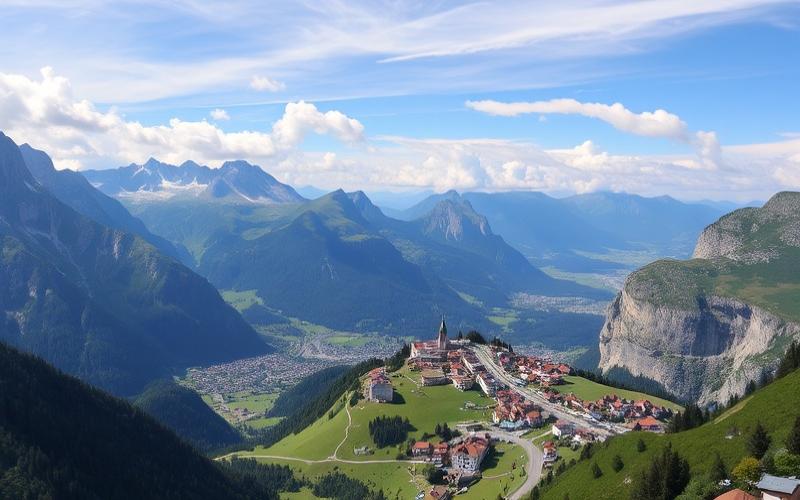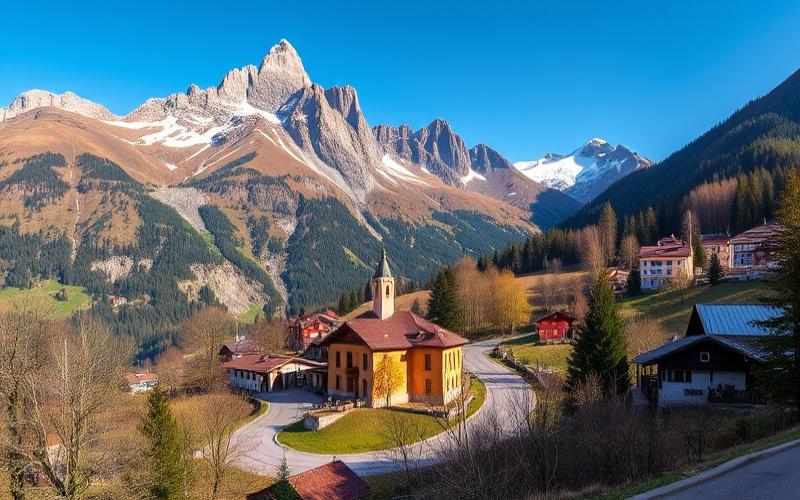
 Published on and written by Cyril Jarnias
Published on and written by Cyril Jarnias
The Swiss real estate market is undergoing a fascinating evolution in 2025, marked by significant changes in economic and demographic dynamics. With the Swiss National Bank’s (SNB) recent decision to lower its key interest rate to 0.5% in December 2024, the Swiss real estate sector is entering a new era, offering fresh perspectives for investors and buyers. This rate cut, combined with a resilient economy and sustained housing demand, is shaping a rapidly changing real estate landscape. In this article, we will explore the current trends defining the Swiss real estate market in 2025, focusing on the most dynamic sectors, price evolution, and the best investment opportunities.
Trending Real Estate Sectors: A Switzerland in Transformation
In 2025, the Swiss real estate market is seeing several particularly dynamic sectors emerge, reflecting the country’s societal and economic changes.
Urban residential real estate remains a market pillar, driven by increasing urbanization and sustained demand in major cities like Zurich, Geneva, and Basel. Modern apartments equipped with smart technologies and located near public transportation are particularly sought after. This trend is explained by continuous immigration and a growing preference for urban living, especially among young professionals and families.
The senior housing sector is also experiencing remarkable growth. With Switzerland’s aging population, demand for residences adapted to elderly needs is increasing significantly. These residential complexes, often featuring integrated medical and leisure services, are attracting more investors aware of this expanding market’s potential.
Sustainable and ecological real estate is establishing itself as a major trend in 2025. Buildings with high energy efficiency, using sustainable materials and incorporating green technologies, are increasingly in demand. This evolution responds not only to growing environmental concerns but also to new sustainable construction regulations implemented by Swiss authorities.
The co-working and flexible office spaces market continues to develop, reflecting post-pandemic work pattern changes. These spaces, often located in central urban areas, offer flexibility appreciated by businesses and independent workers, contributing to revitalizing certain commercial districts.
Finally, the luxury real estate sector, particularly in regions like Lake Geneva or upscale ski resorts, maintains its appeal for wealthy international clients. Switzerland’s political and economic stability continues to make it a preferred destination for prestigious real estate investments.
Good to know:
In 2025, the most dynamic sectors of the Swiss real estate market are urban residential real estate, senior housing, sustainable real estate, flexible workspaces, and luxury real estate. These trends reflect the country’s demographic, environmental, and economic evolutions.
Price Evolution: A Market Seeking Balance
Price evolution in the Swiss real estate market in 2025 presents a nuanced picture, influenced by various economic and regulatory factors.
In the residential sector, we observe a moderate but steady price increase, particularly in urban and suburban areas. According to Wüest Partner data, apartment prices have increased by 3.4% on average, while single-family homes have seen a 3% rise compared to the previous year. This increase is partly explained by persistent strong demand facing limited supply, especially in major urban areas like Zurich, Geneva, and Lausanne.
However, price increases are not uniform across the country. Rural regions and some peripheral areas are experiencing stabilization, or even slight price decreases in some cases. This geographical disparity reflects different demographic and economic dynamics between urban centers and less densely populated regions.
The rental market, meanwhile, is experiencing a significant rent increase, particularly in large cities. The housing shortage, combined with sustained immigration and population growth, maintains upward pressure on rents. In 2025, we observe an average rent increase of 2.5% in urban centers, with peaks reaching 4% in some particularly sought-after areas.
In the commercial real estate sector, the situation is more contrasted. Office spaces in prime locations maintain their value, or even experience slight appreciation. Conversely, traditional commercial spaces, particularly in retail, face challenges with stabilization or slight price decreases, reflecting changes in consumption habits and e-commerce growth.
It’s important to note that the recent SNB key rate cut to 0.5% could have a moderating impact on price increases in the medium term. This decision, aimed at stimulating the economy, could make real estate financing more accessible, potentially increasing demand while enabling more buyers to access property ownership.
Good to know:
In 2025, the Swiss real estate market is experiencing moderate price increases, with an average increase of 3.4% for apartments and 3% for houses. Rents in large cities are increasing by 2.5% on average. The SNB’s key rate cut could influence this trend in the medium term.
Best Investment Opportunities: Winning Strategies for 2025
In the Swiss real estate landscape of 2025, several property types stand out as particularly promising investments, offering a balance between profitability and security.
1. Residential real estate in growing urban areas
Apartments and small houses in expanding cities like Zurich, Lausanne, or Basel remain solid investments. These areas benefit from strong rental demand, fueled by immigration and continuous urbanization. Properties located near public transportation and employment centers are particularly attractive.
2. Senior residences and adapted housing
With Switzerland’s aging population, senior residences and adapted housing represent long-term investment opportunities. These properties offer not only stable demand but also the possibility of high rental income, particularly in regions where supply is limited.
3. Mixed-use buildings
Buildings combining commercial spaces on the ground floor and apartments on upper floors are gaining popularity. This configuration offers income diversification and better resilience against market fluctuations. Locations in dynamic neighborhoods of medium-sized cities are particularly interesting.
4. Ecological and sustainable properties
Buildings with high energy efficiency or certified according to strict environmental standards (like Minergie in Switzerland) are attracting more investors and tenants. These properties often benefit from tax advantages and better long-term valuation.
5. Co-working spaces and flexible offices
Investing in flexible workspaces, particularly in city centers, can prove lucrative. Demand for these spaces continues to grow, driven by evolving work patterns and the flexibility sought by businesses.
6. Luxury real estate in prime locations
For investors with significant means, luxury real estate in sought-after regions like Lake Geneva, Gstaad, or St. Moritz offers significant appreciation opportunities. These properties attract wealthy international clients and maintain their value even during economic uncertainty.
7. Renovation projects in gentrifying neighborhoods
Purchasing and renovating properties in gentrifying neighborhoods can offer excellent returns on investment. This strategy requires good knowledge of the local market and urban trends.
It’s crucial to note that the success of these investments heavily depends on factors such as location, construction quality, and effective property management. Additionally, investors must remain attentive to regulatory developments, particularly regarding rental and construction, which can impact long-term profitability.
Good to know:
The best investment opportunities in Switzerland in 2025 include urban residential real estate, senior residences, mixed-use buildings, ecological properties, co-working spaces, luxury real estate, and renovation projects in gentrifying neighborhoods. Thorough analysis of the local market and long-term trends is essential to maximize return on investment.
The Swiss real estate market in 2025 presents both significant challenges and interesting opportunities for investors and buyers. Understanding these dynamics is crucial for making informed decisions in this evolving landscape.
Major challenges:
- Housing shortage: The persistence of limited supply facing growing demand, particularly in urban areas, continues to push prices upward and makes property access more difficult for many households.
- Strict regulations: Increasingly strict construction standards and environmental regulations can increase development and renovation costs.
- Real estate bubble risk: Continuous price increases in certain regions raise concerns about potential market overvaluation.
- Interest rates: Although rates are currently low, a potential rise could impact borrowing capacity and investment profitability.
Emerging opportunities:
- Sector digitalization: Growing adoption of technologies like blockchain for real estate transactions and property management offers new efficiency and transparency opportunities.
- Sustainable development: Growing demand for ecological buildings opens new perspectives for innovative investors and developers.
- New ownership models: The emergence of models like shared ownership or modern housing cooperatives meets the needs of a new generation of buyers.
- Urban revitalization: Urban redevelopment projects in Swiss cities create opportunities for mixed and innovative real estate developments.
To successfully navigate this market, investors must adopt a strategic approach. This involves careful portfolio diversification, particular attention to local demographic and economic trends, and integration of sustainability criteria in investment decisions.
Collaboration with local experts and using advanced data analysis tools can help identify the best opportunities and mitigate risks. Additionally, staying informed about regulatory developments and government housing policies is crucial for anticipating market changes.
Finally, adaptability will be a key quality. Investors who can quickly adapt to new trends, like growing demand for flexible living spaces or integration of smart technologies in buildings, will be better positioned to succeed in the Swiss real estate market of 2025 and beyond.
Good to know:
The Swiss real estate market in 2025 presents challenges such as housing shortages and strict regulations, but also offers opportunities in digitalization, sustainable development, and new ownership models. A strategic, diversified, and adaptable approach is essential for success in this evolving market.
Conclusion: A Dynamic Market Offering Promising Prospects
The Swiss real estate market in 2025 is characterized by its resilience and dynamism, offering a range of opportunities for savvy investors. Despite challenges like price pressure in urban areas and constantly evolving regulations, the Swiss real estate sector remains attractive thanks to the country’s economic stability and sustained housing demand.
Key trends shaping the market – continuous urbanization, population aging, growing demand for sustainable buildings, and evolving work patterns – create promising investment niches. Whether in urban residential real estate, senior residences, flexible workspaces, or ecological properties, opportunities are numerous for those who can identify and seize them.
The recent SNB key rate cut to 0.5% opens new perspectives, making financing more accessible and potentially further stimulating the market. However, it’s crucial to remain vigilant about overvaluation risks in certain segments and maintain a diversified, well-informed investment approach.
To succeed in the Swiss real estate market in 2025, it’s essential to combine deep understanding of local dynamics with long-term vision. Investors who can anticipate future needs, integrate technological innovations, and adapt to new regulations will be best positioned to benefit from opportunities offered by this constantly evolving market.
Ultimately, the Swiss real estate market of 2025 remains fertile ground for investments, offering an attractive balance between stability and growth potential. With a strategic approach and good understanding of market trends, investors can expect solid returns and long-term appreciation of their real estate assets in Switzerland.
Disclaimer: The information provided on this website is for informational purposes only and does not constitute financial, legal, or professional advice. We encourage you to consult qualified experts before making any investment, real estate, or expatriation decisions. Although we strive to maintain up-to-date and accurate information, we do not guarantee the completeness, accuracy, or timeliness of the proposed content. As investment and expatriation involve risks, we disclaim any liability for potential losses or damages arising from the use of this site. Your use of this site confirms your acceptance of these terms and your understanding of the associated risks.


